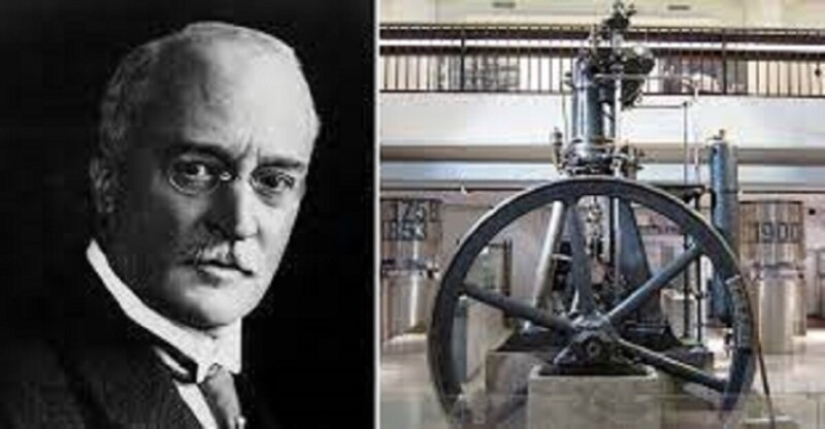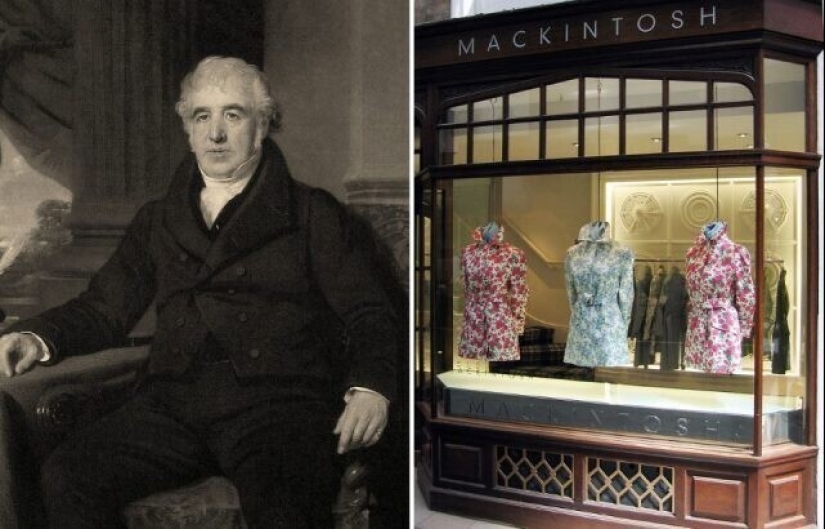Guillotine, silhouette and other things named after real people
Categories: Culture | History | World
By Pictolic https://pictolic.com/article/guillotine-silhouette-and-other-things-named-after-real-people.htmlHave you ever wondered why things got such names as they have now? Why is "chair" exactly "chair", and not something else? Unfortunately, we will not answer all such questions, but we will be happy to answer the most interesting ones!
Saxophone and diesel, Jacuzzi and macintosh – we use these things in everyday life, without thinking that once these words were the names of real people.


The word "jacuzzi" means a bath with built-in pumps that make the water bubble. The first company to produce such baths, Jacuzzi Brothers was founded by seven Italian Jacuzzi brothers in 1915 to produce various goods for the military. When Candido Jacuzzi's young son was diagnosed with arthritis and prescribed a hydro massage, the brothers got together to develop a pump that could be installed in the bath below the water level. The J‑300 pump was sold to hospitals and schools until 1968, when the business expanded to include the production of hot tubs for private use.

Despite the nickname "Madame Guillotine", this method of execution was named after the French doctor Joseph-Ignace Guillotin. Before the French Revolution of 1792, various methods of execution were used in France, including beheading machines. But the humanist Guillotin considered many of them inhuman. It took several attempts to be decapitated with an axe or a sword, and several minutes to be hanged, and all this time the victim was in agony.
To avoid unnecessary suffering, in October 1789, Guillonet proposed using a simple and effective means to make the death penalty more painless. His guillotine was fast and accurate, and it soon became the preferred method of execution in France. Although he was not the inventor of the machine itself, the guillotine was named after Guillotin as the man who advertised it as the best and only method of execution.

Rudolf Diesel knew from the age of 14 that he would be an engineer. In 1879, he was unable to get a higher education due to typhoid fever, and spent the next year acquiring engineering experience at the Sulzer brothers machine-building plant in Switzerland. He graduated from the university in 1880. During his working life, Diesel received several patents while working for Karl von Linde, and in 1893 published a treatise that formed the basis for his subsequent work on the diesel engine.
His understanding of thermodynamics and fuel efficiency led to the creation of an engine more efficient than steam, the most efficient in that era. His first diesel engine, the Motor 250/400, is now on display at the German Technical Museum in Munich.

A silhouette is a special type of artistic image in which an object is represented as a solid figure of one dark color,usually black, on a contrasting light background. The custom of making portraits in this way gained popularity in the middle of the XVIII century as a cheap alternative to a miniature painted with paints. Artists either cut out a silhouette, working by eye, or drew a contour on paper, and then painted it.
Such economy in portraits, as in many other things, was associated with the tough economic policy of Etienne de Silhouette. He was the Minister of Finance of France in 1759 and imposed austerity on the entire people of the country after the Seven Years ' War. So, although he was not an artist, his name was forever associated with this style of art thanks to his financial policy.

Antoine-Joseph Sachs ("Adolphe") was an inventor and musician who played the flute and clarinet. His parents were instrument designers, and Adolf also started designing instruments. He liked both the sound of wind instruments and the characteristic sound of a tongue instrument, and he wanted to find a way to combine them. In addition to inventing the beloved saxophone, he also invented the saxophone, saxhorn and saxtuba.

This favorite Mexican dish was invented by chef and restaurateur Ignacio Anayasu, nicknamed "Nacho". For a while, he worked at the Victory Club in Piedras Negras. The story goes that one of the regular customers of the institution, a woman named Marnie Finan, asked Ignacio to prepare some unusual snack. Noticing pieces of corn tortillas in the kitchen, he cut them into triangles, fried them, then added melted cheese and jalapeno pepper. When he opened his own restaurant, he called it "Nacho's Restaurant".

Hard and juicy apples "Granny Smith" in 2019 was the third most popular apple in the United States. It is named after a woman who owned a farm in New South Wales, Australia.
By the time Mary Ann Smith became famous as "granny" Smith", she was already a prominent figure in her community. One day she threw away the remains of French wild apples, and a few weeks later she found a small sprout in the compost heap. She took care of him, and when he grew up, she sold apples from the tree at the local market. The apple really became famous, entering the international market, when Edward Gallard bought the Smith property after the death of Mary's husband, Thomas. Apples first won the local market, and since 1895 they were exported, and Granny Smith apple trees began to be actively cultivated in many parts of the world.

Charles McIntosh started his career as a clerk, but retired at the age of 20 to pursue his favorite chemistry. In the course of his experiments with oil, he found a way to apply oil to rubber and make it soluble so that it could glue two pieces of fabric. After the merger of the Macintosh company with the Thomas Hancock clothing company, they began to produce rubberized jackets, which became popular not only with the population, but also with the army, railway workers and police officers.
Initially, the fabric of the coat was smelly and tough, besides sometimes it melted in hot weather, but the Macintosh solved the problem by vulcanizing the rubber.

This stiff felt hat with a round top and small brim got its name from the surname of Thomas and William Bowler, London hatters. Some say that it was developed after Thomas Cook, the First Earl of Leicester from Norfolk asked his hatter to provide him with something that his gamekeepers could wear. The top hats they usually wore knocked down low-hanging branches.
However, other sources suggest that Thomas ' younger brother, Edward, had long dreamed of such a hat. The story goes that when Edward went to pick up his hat in December 1849, he put it on the floor and stamped on it to check if it was durable enough before paying 12 shillings for it.
Keywords: Culture | History | World | Name | Names
Post News ArticleRecent articles

We will not be surprised if after reading this material you want to knock on the food before you eat it. To be safe, so to speak. ...

Most of the actors and Actresses hide the fact that once participated in explicit films. Although the "Italian stallion" Stallone ...
Related articles

A resident of Russia has a question "And who will do this for you? Pushkin? " does not cause the slightest surprise. Everyone ...

Marilyn Monroe knew how to be seductive even in the most prosaic situations, and the usual breakfast in bed is no exception. Look ...

Fritz Haarmann — German vampire killer, distinguished by remarkable cruelty and cynicism. His victims were young men, as he had ...

A resident of Russia has a question "And who will do this for you? Pushkin? " does not cause the slightest surprise. Everyone ...